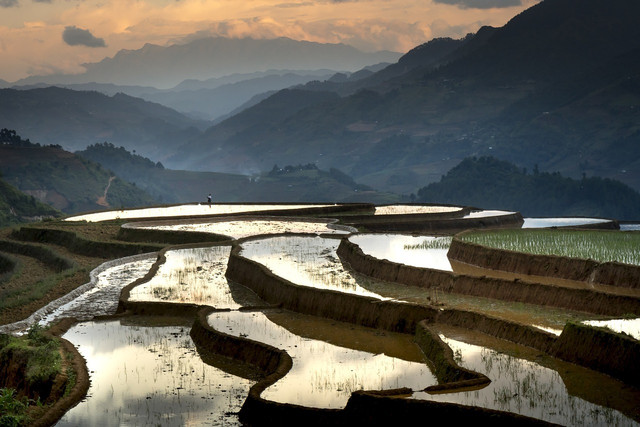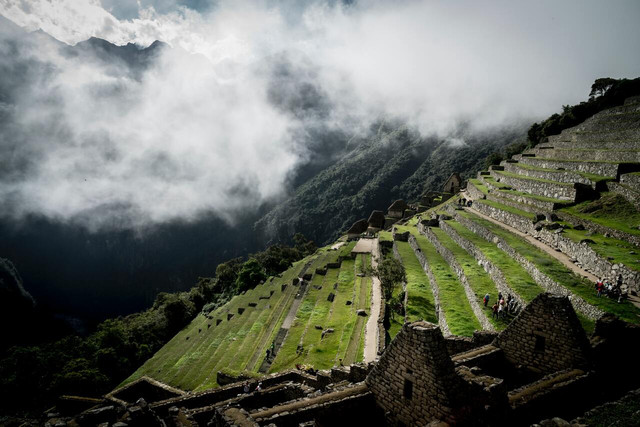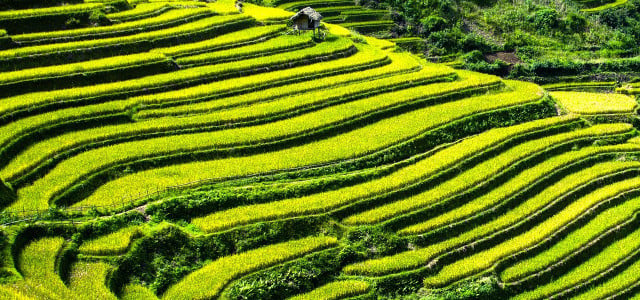They can be popular tourist destinations — but did you know terraced farming is also good for the Earth? Here’s how the ancient practice benefits farmers and the planet.
Terraced farming is believed to go back several centuries, all the way to the 15th century AD in West Africa. However, the origins of these farms are credited to the Incas.
In brief, terraced farming is a way to make mountainous land a productive area for agriculture. This farming method, popular worldwide, is implemented on sections of sloped or hilly land, which are landscaped to include a series of gradual steps or platforms. There are a few different styles of terraced farming, but the principle of gradual ridges remains the same across all methods.
The strategy is helpful in both wet and dry climates. Terraced paddy fields, as seen in the photo below, catch rainwater and therefore don’t need much irrigation. They’re most commonly found in the mountainous terrains of Asia, Africa and South America, where they’re used for farming rice, wheat and barley.
In the drier climate of the Mediterranean Basin, terraced farming is used for growing olive trees, cork oak and vineyards. However, terraced farms also exist throughout Europe.
Terraced Farming: What’s the Point?

Terraced farming avoids and decreases erosion and surface runoff in the long and short term — and it’s highly effective. Without terraces, farms on hills and mountains often suffer from severe erosion, worsening with rain. Terraces reduce the volume and velocity of water moving through crops and down the slope, thus decreasing erosion. That allows for more productive and intensive farming, similar to the beneficial effects of vertical farming.
Terraced farming also prevents water pollution and decreases the need for irrigation. The terraces catch and retain rainwater. This retention is especially helpful for crops that require high irrigation, like rice, as it saves on irrigation. Furthermore, terracing decreases the amount of rainwater runoff with sediment and other contaminants which pollute waterways.
Using terraces even increases the total land area that can be farmed — grassed waterways are not needed. Overall, terraced farming is often a more productive and climate-friendly farming method in mountainous regions.
More Examples of Agricultural Terracing



There are lots of examples of terraced farms worldwide. Saffron, corn, black cumin and apples are just a few more examples of produce grown using this versatile farming method.
One well-known example of agricultural terraces is seen at Machu Picchu, where the Incas planted potatoes and other crops. Another is the Banaue Rice Terraces in the Cordilleras mountains of the Philippines, which were named a UNESCO World Heritage Site in 1995. Terraced rice farms in Sapa, Vietnam, are also popular tourist destinations. Further west, you can find terraced vineyards in Switzerland along Lake Geneva, where the Lavaux Vineyard Terraces are another UNESCO site.
Read more:
- What Is Sustainable Agriculture? 5 Examples and Its Benefits
- Coppicing: Benefits of the Traditional Woodland Management
- 11 Flowers for Bees: Turn Your Garden or Balcony Into a Bee Paradise
Do you like this post?






